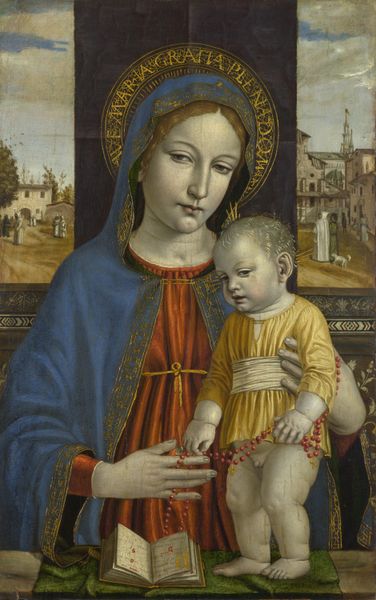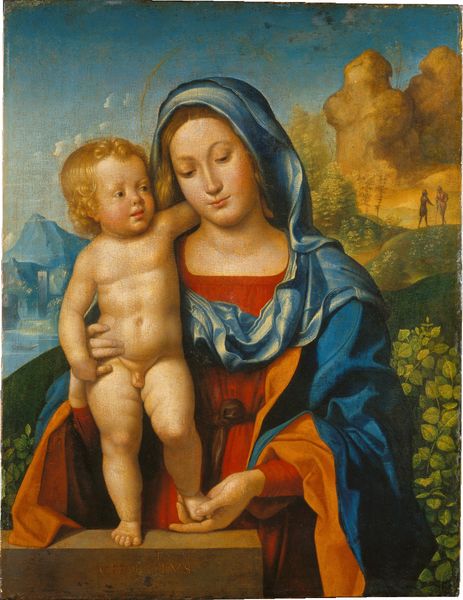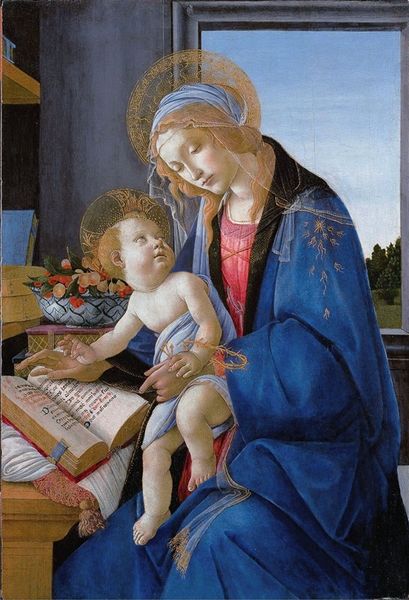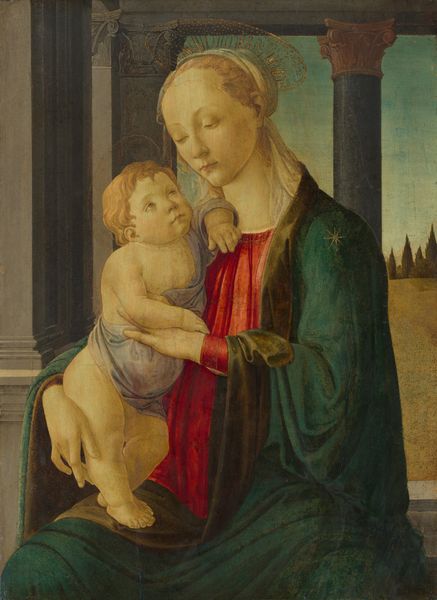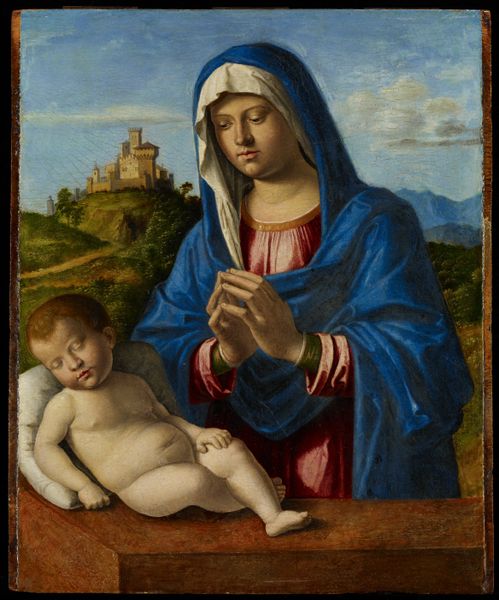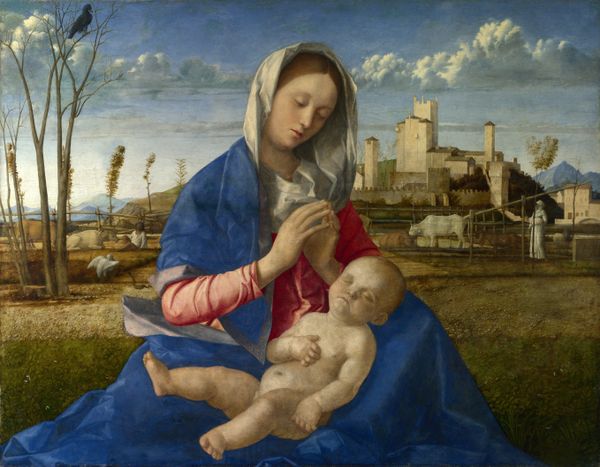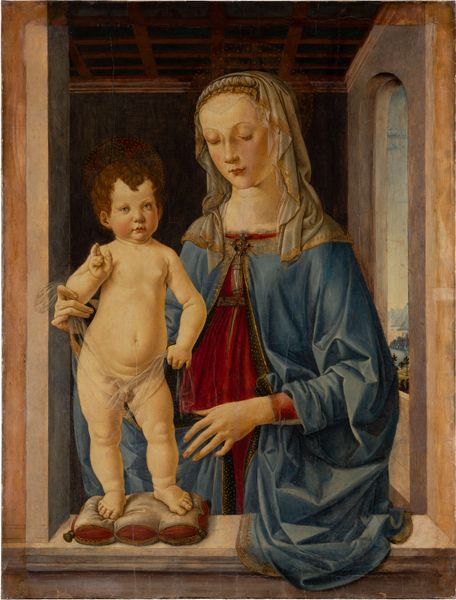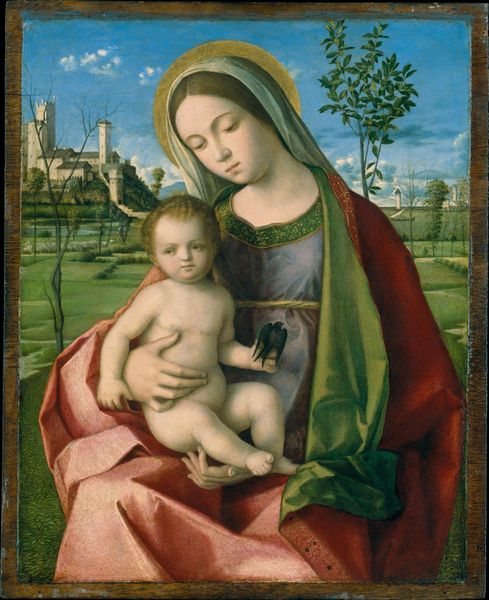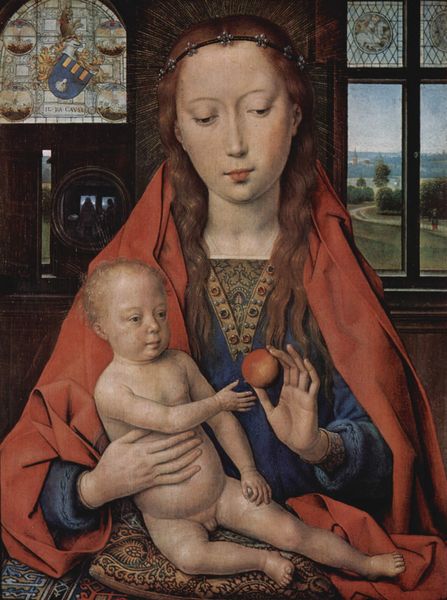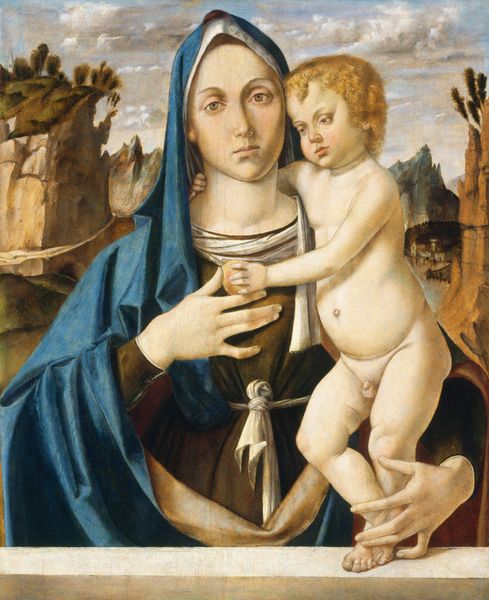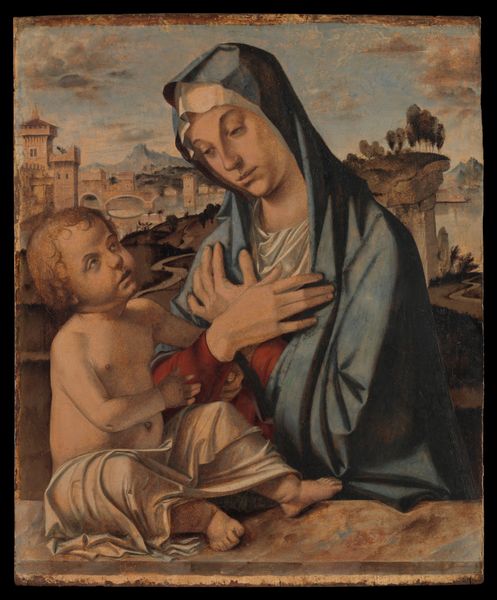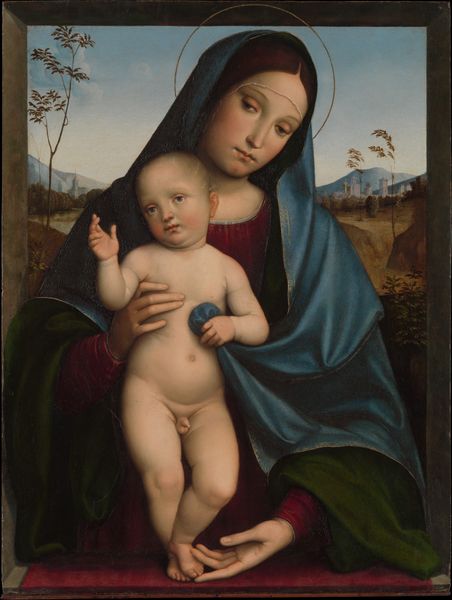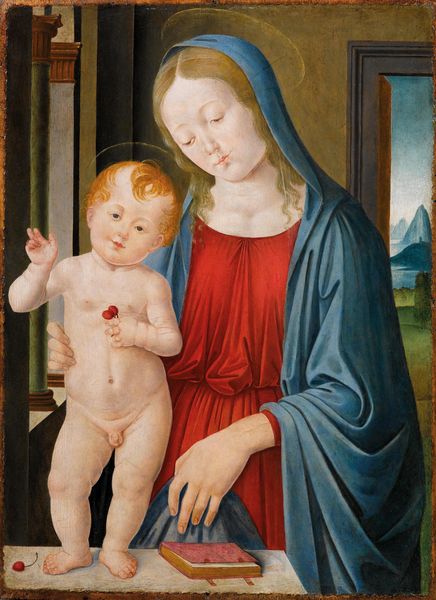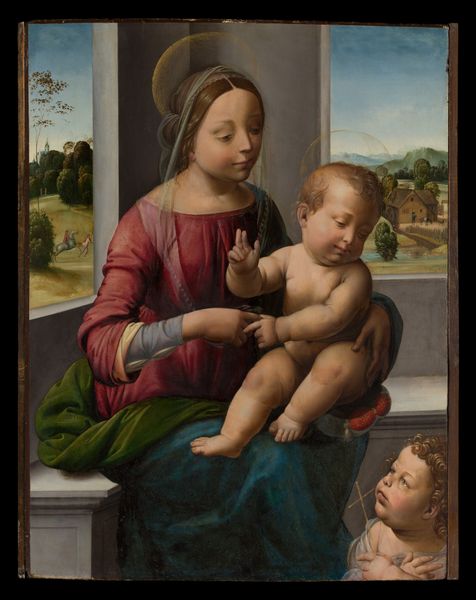
painting, oil-paint
#
portrait
#
high-renaissance
#
painting
#
oil-paint
#
figuration
#
oil painting
#
italian-renaissance
#
portrait art
Copyright: Public domain
Editor: Here we have Filippino Lippi’s "Madonna and Child" from 1484, an oil painting that presents a tender moment. The fabrics in particular stand out to me; the crimson and blue are striking. What is your interpretation of Lippi's choice of materials? Curator: I'm drawn to the pigment choices and how they reveal the economics of artistic production at the time. Consider that vivid ultramarine blue – derived from lapis lazuli – was often more expensive than gold leaf. Lippi’s client likely spared little expense. It raises questions about who could afford such artistic devotion and how such demands shaped workshops in the Italian Renaissance. What do you think this patronage reveals? Editor: It's interesting how the cost of the pigment influenced the artwork itself. It shows a social hierarchy even in religious depictions! It also points to the skilled labor needed to create these pigments from raw materials and the importance of trade routes that facilitated this. Curator: Exactly! And let's think about the physical labor of preparing and applying these paints, building layer upon layer to achieve the rich depth of colour. What does the depiction of fabric – so clearly an element of value in the work – say about the consumer culture taking shape in Florence at the time? Editor: I see how the piece isn't just a religious symbol; it's an object deeply embedded in the social and economic reality of its time. I hadn’t considered the craftsmanship as part of consumer culture. Curator: The materials aren’t simply window dressing; they're woven into the social fabric of the Renaissance. Seeing that connection enriches our understanding of both the artwork and its context. Editor: This perspective really highlights how the artistic process itself, the selection and application of materials, reflects larger social trends. I'll never look at "Madonna and Child" the same way again.
Comments
No comments
Be the first to comment and join the conversation on the ultimate creative platform.
